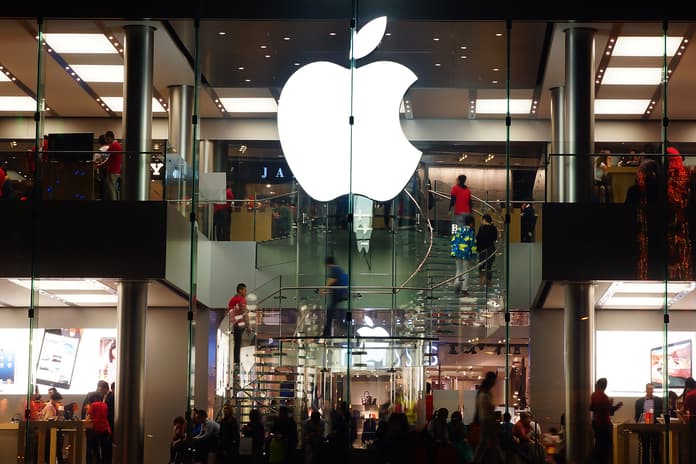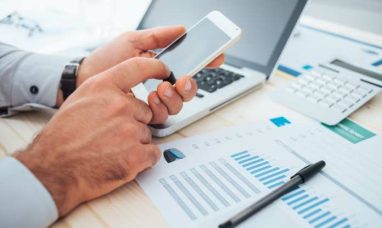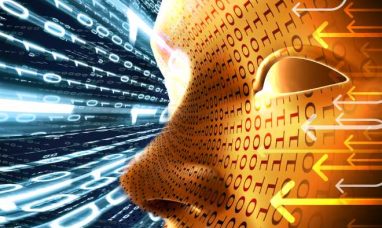Apple Inc. (NASDAQ:AAPL), the technology giant, has won the title of the world’s biggest market value ever at $3 trillion or more, demonstrating its unwavering supremacy in the worldwide market. With a track record of innovation, unwavering customer loyalty, and a varied product portfolio, Apple has cemented its place as an industry leader and grabbed the hearts and wallets of consumers around the world, propelling the market cap of Apple stock to unprecedented heights. It is believed that roughly half of smartphone users in the United States use Apple’s iPhone as their primary device, and that figure has grown over time.
Apple has taken advantage of its easy access to consumers via smart devices by developing a robust ecosystem, including its App Store and services such as Apple Music and iCloud, which has resulted in a significant recurring revenue stream. While Apple has been in the finance game for a few years, having launched the Apple Card in 2019, the firm has decided to take it a step further.
Apple announced its debut into the “buy now, pay later” (BNPL) industry in March with the Pay Later service, which is incorporated into Apple Pay and Apple Wallet. While Apple emphasizes that the program is intended to protect consumers’ financial health, BNPL methods have drawn criticism from regulators worried about potential customer harm. Users can use Apple Pay to make a purchase and reimburse it in four equal installments over six weeks, with no interest or late fees. On the surface, BNPL services appear to be harmless, providing a simple way to pay for large purchases in installments. According to statistics, 30% of users struggle to make BNPL payments, with some preferring these fees before critical expenses such as rent and utilities. BNPL services have also been connected to larger expenditures, with consumers using them to purchase clothing and other non-essentials. Concerns have also been expressed concerning overdraft fees and the possibility of BNPL loans appearing on credit reports. The development of BNPL services has prompted growing attention from government watchdogs around the world, with investigations and regulatory measures implemented to address issues such as debt accumulation and data collection. Given its large user base and influence, Apple’s entry into the BNPL market with Pay Later poses threats to both consumers and competing businesses. Some believe that associating BNPL with Apple’s brand contradicts the company’s declared dedication to doing the right thing for customers.
Apple is new to the BNPL game, having only recently launched, although others, like PayPal, have been doing so for years. In addition, after only three years of providing the service, PayPal has negotiated an agreement with private equity company KKR to acquire a large chunk of PayPal’s buy now, pay later (BNPL) loans in Europe, with the deal valued at much to 40 billion euros ($43.71 billion). Despite their popularity, BNPL services encountered hurdles last year as interest rates and inflation rose, reducing customer spending power. PayPal’s stock rose 1.7% following the announcement of the deal. The transaction, which is scheduled to finalize in the second part of the year, is estimated to yield around $1.8 billion in gross proceeds. Following the completion of the transaction, PayPal intends to spend about $1 billion on incremental share repurchases in 2023. The move is seen positively by payment processors since it minimizes credit risk and reduces uncertainty about the future performance of BNPL products.
So, while offloading BNPL loans is good news for PayPal, Apple has risen to fresh all-time highs since debuting its service? Sure, this rally has nothing to do with BNPL and is being fueled by AI hype, but the risks to BNPL are also risks to Apple (and the US economy as a whole) because there is a troubling trend in the relationship between real disposable income and personal consumption expenditures, and the capital allocated to mitigate loan risk could be better used elsewhere, such as PayPal repurchasing shares.
I downloaded the Real Disposable Personal Income (DPI) and Personal Consumption Expenditures (PCE) data from the FRED site and plotted them in Excel to create a linear regression trend line. Investopedia has detailed definitions and explanations of DPI and PCE, but the short summary is that DPI measures how much money an individual or household has after taxes, while PCE is a gauge of consumer spending and is a primary driver of GDP.
PCE is significantly above its trend from 2010 to the present, which could be inflating the economy, but disposable income is below, raising concerns about the sustainability of this rise. I also ran a trend line from January 2010 to December 2019 to obtain a regression equation that was not influenced by the pandemic. Based on historical data, I discovered that actual DPI in May 2023 was -335 to -486 billion below predicted value, while actual PCE was 1,467 to 2,290 billion above expected value.
The PCE/DPI ratio has historically been relatively high, but has been declining since last year. The gray highlights denote recessions, which are usually preceded by a falling PCE/DPI ratio. A mean reversion in expenditures in the future years could be a drag on the economy, but hopefully wages will grow and DPI will mean revert as well, helping to keep PCE robust. These are odd economic circumstances, with the pandemic disrupting the typical ebb and flow like never before, but it is difficult to see how consumer spending can be sustained at such a high percentage of DPI.
While most people consider Apple products and services to be necessities and are deeply embedded in many people’s daily lives, they are not immune to diminishing consumer expenditure. Consumer spending fell by more than 3% in April 2023 compared to the previous year. New iPhone models costing more than $1,000 will not sell as well as in previous years if DPI is depressed, which makes me concerned about Apple’s foray into the BNPL market.
BNPL, however, is more than meets the eye. All of the big IT companies’ true strength is in data collection and utilization. Apple has insights into consumer patterns thanks to a constant monitoring device on millions of people around the world, giving it a competitive advantage. The Consumer Financial Protection Bureau is now looking at BNPL firms like Klarna, Zip, Afterpay, Affirm, and PayPal, expressing worries about “accumulating debt, regulatory arbitrage, and data harvesting in a consumer credit market that is already rapidly changing with technology.” Apple even mentioned data harvesting when it launched the Apple Card in 2019.
Apple Card enables unique experiences only possible with the power of the iPhone, such as reaching assistance 24 hours a day, seven days a week by sending a text message through Messages. Apple Card employs machine learning and Apple Maps to clearly label transactions with vendor names and locations in Wallet5, and gives weekly and monthly expenditure summaries to help clients better understand their spending.
What has driven this year’s enormous tech hype machine? Artificial Intelligence…and what needs a large amount of data to be effective? You’ve probably guessed it…AI stands for Artificial Intelligence. I’m not sure what Apple has in store, but they always appear to be ahead of the curve, so this BNPL journey could lead to something considerably more significant in the future. While I disagree with Apple’s financial services expansion and exposure to default risk, especially given that others are lowering BNPL loan exposure, I have faith in their leadership team’s larger vision.
Long-term issues include the consequences of inflation, interest rates, and customer purchasing power, particularly as Apple expands its banking sector. However, the near term view remains bullish, and we are discussing a company that has recently reached a new all-time high.
Even at a new all-time high, the price is comfortably within the range and has room to rise above $220. I’m more of a hold right now because there’s something psychologically appealing about buying after such a large price increase, so my trade idea is to add some downside hedging by buying shares and adding a calendar put spread out to the end of the year. A December 2023/January 2024 $180 put calendar spread costs only $70 and provides downside and volatility coverage because calendar spreads are positive vega instruments (value increases with increasing volatility). As always, options calculators have limitations and are often overly optimistic on calendar spreads, but the $180 price action area has been a strong area for Apple, so any downside should run to this point and possibly stall or bounce, giving you a window to exit your long position with a minimal loss or small profit if the timing is just right if sentiment shifts towards the end of the year.
Apple Stock Short-Term Outlook Remains Bullish
Apple’s rise to a market capitalization of more than $3 trillion demonstrates the company’s unrivaled supremacy in the worldwide market. The company’s legacy of game-changing technologies, constant customer service, and diverse product portfolio has driven it to the forefront of the industry, attracting consumers worldwide and cementing its position as a market leader. While Apple’s Pay Later service may appear to be a natural development into the “buy now, pay later” market, worries about BNPL practices and their possible influence on consumers’ financial health remain. The effects of inflation, interest rates, and consumer purchasing power become long-term issues as Apple expands its financial sector. Nonetheless, Apple has a distinct advantage with its enormous ecosystem and access to user data, which may open the way for intriguing future initiatives, notably in the field of artificial intelligence. In the short term, Apple stock remains strong, bolstered by its recent all-time high. However, as it enters the BNPL area and expands its horizons, the company must tread carefully in order to maintain its commitment to doing the right thing for its clients and shareholders.
Featured Image: Megapixl © Plotnikov















